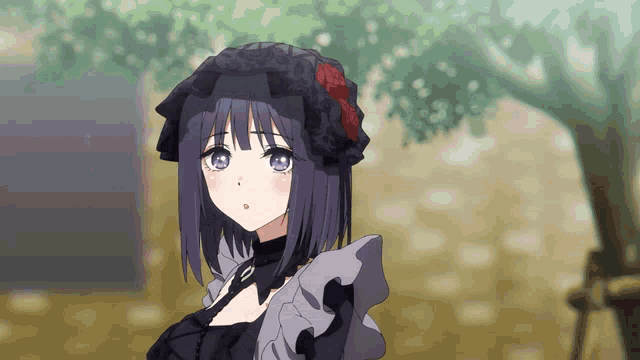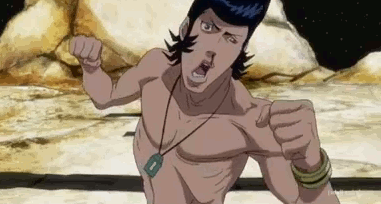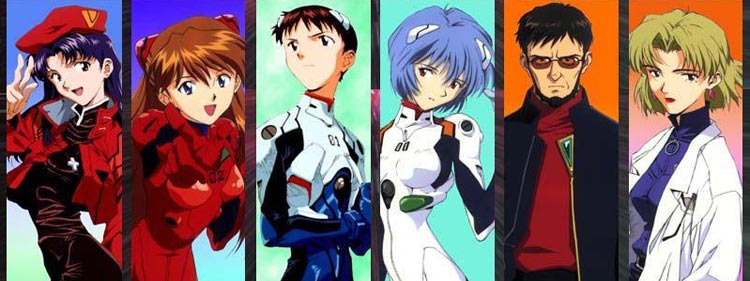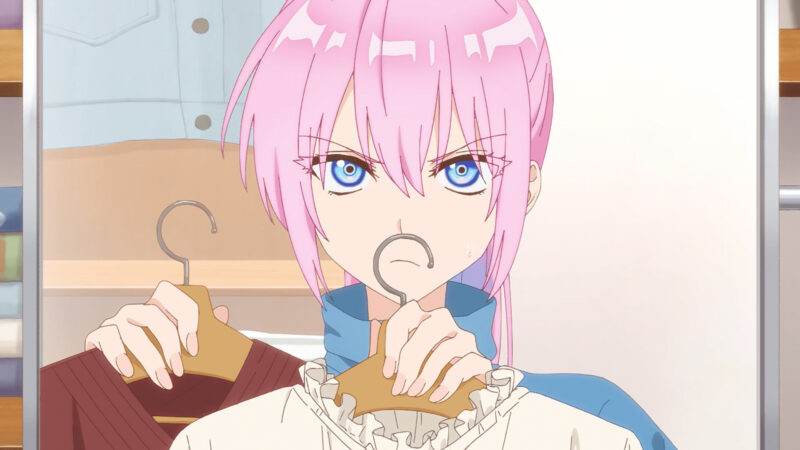
Have you thought about how the anime you watch works? Animation results from the stickiness of our minds and vision. We take this stickiness for granted, but without it animation wouldn’t work. Animation happens when a series of images are shown to us fast enough to invoke this stickiness. If you flash these still images too slowly, the illusion of movement breaks down. If you’ve ever played a video game with a low frame rate, the game will appear to be a jerky or frozen picture. Frame rate is the speed still frames are displayed.
Now you’d think more frames the better, right? For gaming there’s far less overhead for this approach. After all, a machine is generating the images. But when you get into animation, even with computers helping the process, there are limits to the number of frames a team can draw and color. Fortunately, the human eye and mind has limits too. For example, when focusing on an image series, you can end up with the optical illusion called the Wagon Wheel Effect. This is the illusion of an image moving in reverse compared to the direction of its frames. This happens because the brain is lazy and averages the images between keyframes. Think about a wagon wheel in an old film. It will appear to spin backward while the wagon moves forward. This brain laziness works to animator’s advantage.
Frame rates have diminishing returns after a certain frequency. In Debattista’s 2017 study of frame rates and resolutions, most people preferred frame rates above 30 fps with 60 fps getting the most preference. Now consider hand drawing a 20 minute animation:
20 minutes x 60 seconds = 1200 seconds
1200 seconds x 24 frames per second = 28800 drawings
1200 seconds x 30 frames per second = 36000 drawings
1200 seconds x 60 frames per second = 72000 drawings
That’s a lot of drawing! Granted, now computers are able to interpret tweens–the frames between keyframes–and streamline the coloring process. Keyframes are the most important phases of a motion. However, there’s still a lot of time and effort behind each scene. So even animation we could consider low quality still requires a lot of effort and skill. This becomes apparent when you start to hand-animate even a simple sequence.
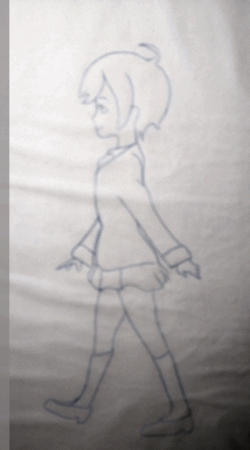 I haven’t hand-animated anything in over 15 years, and I used a tablet of old tracing paper to make this simple 6-frame walking sequence. It’s bad, but as an illustration of the skill animation require, the sequence works. The exercise reminded me of how difficult drawing a full animation is. Granted, animation studios use many, many people to generate each episode. But take some time to make your own action sequence with at least 6 frames. While you work, be mindful of the time you spend on it. Of course, as you practice, you will get faster and better, especially if you produce several thousand drawings. This was how anime studios and American animation studios worked before computers and outsourcing took over the heavy lifting.
I haven’t hand-animated anything in over 15 years, and I used a tablet of old tracing paper to make this simple 6-frame walking sequence. It’s bad, but as an illustration of the skill animation require, the sequence works. The exercise reminded me of how difficult drawing a full animation is. Granted, animation studios use many, many people to generate each episode. But take some time to make your own action sequence with at least 6 frames. While you work, be mindful of the time you spend on it. Of course, as you practice, you will get faster and better, especially if you produce several thousand drawings. This was how anime studios and American animation studios worked before computers and outsourcing took over the heavy lifting.
So even fast-food anime requires an impressive amount of skill and time. Despite this, animation is often a low-paying job in Japan. According to an article in the New York Times (2021), animators can receive as little as $200 a month. Some top Japanese animators can take home between $1,400-3,800 a month. In 2019, the median income for higher-level animators was $36,000, up from around $29,000 a year in 2015. Animators in the US average $65,000 a year. Japanese Entry-level animators averaged $12,000 a year in 2019 (Dooley, 2021). In a Wall Street Journal article dating to 2009, Japanese entry-level animators earned $11,000 a year. To meet deadlines, 13 to 14 hour workdays weren’t unusual (Hayashi, 2009).
As the New York Times article states:
The problem stems partly from the structure of the industry, which constricts the flow of profits to studios. But studios can get away with the meager pay in part because there is a nearly limitless pool of young people passionate about anime and dreaming of making a name in the industry, said Simona Stanzani, who has worked in the business as a translator for nearly three decades.
So the anime we enjoy–even the fast-food animation that appears and disappears within a season–requires a high level of skill that remains largely underpaid. Most of the profit funnels upward to the production committees, which are groups of toy manufacturers, manga publishers, and other corporations that finance the project. Anime studios work on contract and little of the money filters to the animators. Anime is a low-margin and low-wage industry with some exceptions like Kyoto Animation (Dooley, 2021). Some animators even have to live in subsidized housing.
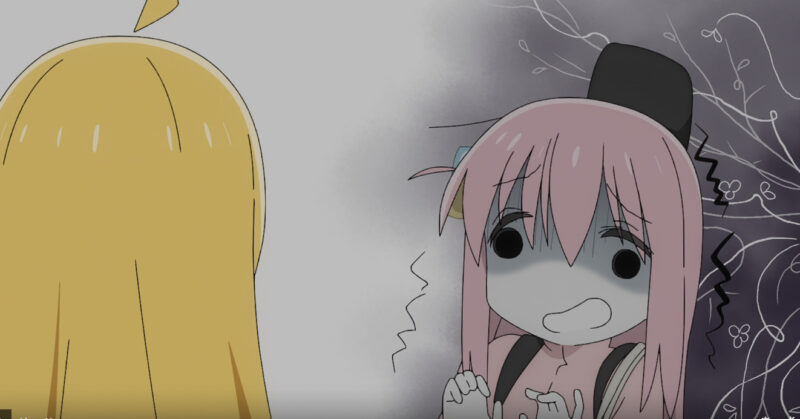
In order to produce a weekly episode, people need to produce between 28,800 to 36,000 frames, edit these into a story, and many, many other steps behind the scenes. The running time of an anime hides all the hours that goes into producing it. Take some time to create a simple walking sequence for yourself to get a first-hand idea of what animators do. Now consider drawing and producing frames for over 12 hours a day, 6 days a week.
Fast-food describes how we anime fans consume animation. We binge and consume anime without a thought of what goes on inside the industry. Fast food–actual fast food–works in the same way. We want it now, cheap, and instant without much thought to how those demands can hurt the people who provide us the product.
So what to do?

As an anime fan, the state of the industry sits beyond your ability to influence other than through small nudges. Those nudges can become shoves if enough people do them. Nudges inside of Japan would be felt sooner than those from the overseas markets. So what nudges can you do?
- Support studios that pay their animators well, like Kyoto Animation, by purchasing their products.
- Be mindful of the time and effort animation requires.
- Support animators who place their work online.
The anime industry needs to reform from within; there’s not much consumers can do beyond voting with their wallets. Most of all, appreciate anime and express that appreciation to studios and animators when you have the chance. The Internet is harsh on creatives with criticism (I’ve added my share of criticism) and mean-spirited attacks. Animators are already beat down by the nature of the industry; fans don’t need to add to that, especially since many fans don’t understand what’s involved to produce their favorite stories.
References
Debattista, K., Bugeja, K., Spina, S., Bashford, R. T., & Hulusic, V. (2018). Frame Rate vs Resolution: A Subjective Evaluation of Spatiotemporal Perceived Quality Under Varying Computational Budgets. Computer Graphics Forum, 37(1), 363–374. https://doi.org/10.1111/cgf.13302
Dooley, Ben, Hida, Hikari (2021) Anime Is Booming. So Why Are Animators Living in Poverty? The New York Times. https://www.nytimes.com/2021/02/24/business/japan-anime.html
Hayashi, Yuka (2009) Discontent Seeps Into Japan’s Anime Studios. The Wall Street Journal. https://www.wsj.com/amp/articles/SB10001424052748703819904574551834260925714
VanRullen R, Pascual-Leone A, Battelli L (2008) The Continuous Wagon Wheel Illusion and the ‘When’ Pathway of the Right Parietal Lobe: A Repetitive Transcranial Magnetic Stimulation Study. PLoS ONE 3(8): e2911. doi:10.1371/journal.pone.0002911
Wiltshire, Alex (2022) How many frames per second can the human eye really see? PC Gamer https://www.pcgamer.com/how-many-frames-per-second-can-the-human-eye-really-see/
